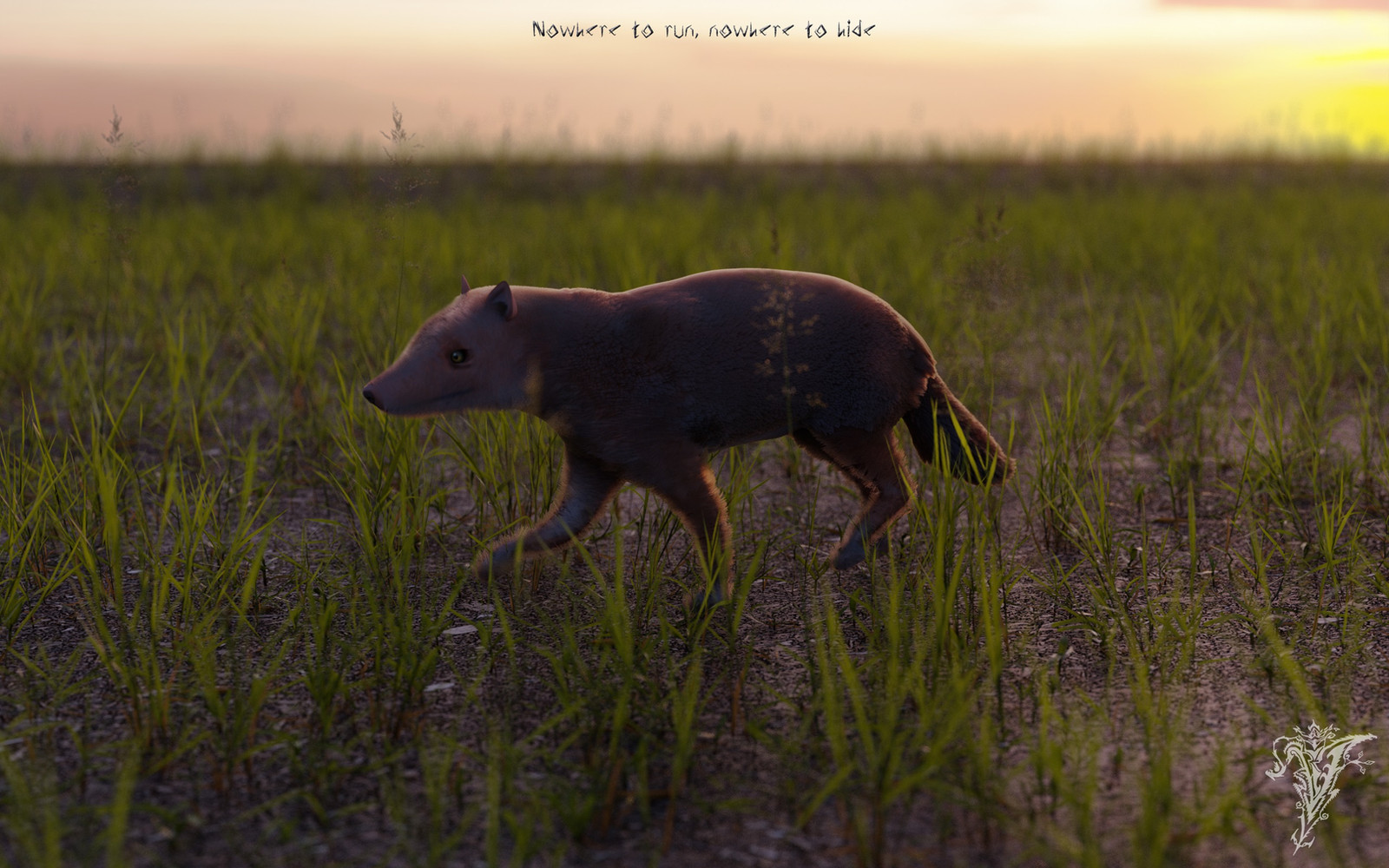HOME | DD
 VikasRao — Nowhere to run, nowhere to hide
by-nc-nd
VikasRao — Nowhere to run, nowhere to hide
by-nc-nd

#3d #canidae #digitalart #dog #ecology #extinct #extinction #holocene #mammal #nature #palaeontology #warrah #paleoart #scientificillustration #wildlife
Published: 2019-09-21 07:39:36 +0000 UTC; Views: 7387; Favourites: 64; Downloads: 0
Redirect to original
Description
Just 1210 km north of Antarctica & 480 km east of Patagonia lie the Falkland Islands, comprising of 2 major (East & West Falkland) and 776 smaller islands. The islands are known today for their cool, windy climate, penguins (among other birds), marine mammals and an economy sustained primarily by sheep.
Today, the Falkland Islands are devoid of native land mammals, but as you’ve probably guessed, this wasn’t always the case. Meet the Falkland Islands wolf, aka the Falkland Islands dog aka the warrah (Dusicyon australis). Despite the name, it wasn’t a wolf or a dog, but rather a distinct genus of canid closely related to the maned wolf (again, not a true wolf) of South America.
Roughly the same size as a jackal, it would have filled a similar ecological niche: an opportunistic hunter that preyed on anything smaller than itself. Charles Darwin noted that the presence of a canid on an isolated island system was highly unusual, as well-known predators such as big cats, canids etc are generally absent on most islands (another reason why island ecosystems are unique). He also noted several differences between those living on East & West Falkland, enough to theorize that the 2 populations may have been distinct subspecies. Another observation that Darwin made was that at the time of his visit, the warrah was becoming quite rare. Indeed, rampant hunting for its fur and persecution by farmers falsely believing that it hunted & killed their sheep had severely depleted its numbers in the late 1800s, it’s lack of fear towards humans and no place to hide on the islands making it an easy target.
Darwin predicted that it would join the dodo in extinction shortly, and sure enough, the warrah was declared extinct as of 1876, making it the first canid to have gone extinct in recent times.
The Falkland Islands today still have large bird populations, but most of these no longer breed there due to invasive species, such as foxes, cats, reindeer and rats. The warrah’s extinction serves as a reminder of the fragility of island ecosystems.
Tools: Blender 2.8, Photoshop
Related content
Comments: 3

It was my understanding that a sub-species of Maned Wolf lived there, too. The Falklands are continental crust, actually a part of the South American continent, with shallow sea separating them from the nearest mainland. In glacial ages, the sea was low enough that dry land connected the two.
👍: 1 ⏩: 2

👍: 0 ⏩: 0

Wow, I wasn't aware of that! I knew the warrah got there by crossing a Pleistocene land bridge and subsequently became stranded on the Falklands, and I suspected that a few other animals could have done the same, but didn't know that the maned wolf did, thanks!
👍: 0 ⏩: 0

























